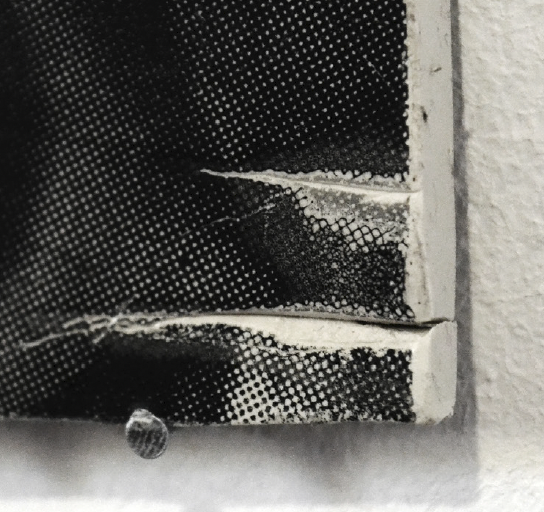Abstract
This article proposes a reflection on how contemporary experimental practices in the printed image can encourage the viewer towards active reception. My practice-based research project has been instigated by questions raised through my fine art practice, concerning how reality is perceived within a photographic printed image and how chance in creation helps the possible development of the photographic reference.
The discovery of photography in 1839 triggered a mode of reproducing images that challenged traditional forms of visual representation. Its characteristic of mimesis of reality, unlike painting, drawing or engraving, forced artists to change their patterns of behaviour. With the arrival of Impressionism, artists recognised the influence of photography on their work, and the “photographic gaze” emerged, which provided a new way of contemplating and representing. As Coronado writes in his text on photography and Impressionism, “The photographic gaze extends beyond and beyond the limits of vision allowed to the painter’s eye” (Coronado, 1998, p. 310).
During the first half of the twentieth century, in the context of the avant-garde, the connection between photography and the plastic arts arose, leading to the conception of new photography in which the symbiosis of the verbal and the visual became evident. The period was marked by a type of innovation that produced a change in expressive resources by breaking with the mimetic condition, ceasing to be the mirror of the world to create another independent narrative, becoming the new reality.
References
Castells, M. (2010) The Rise of the Network Society: The Information Age: Economy, Society, and Culture. 2nd edn. Cambridge, Massachusetts: Blackwell Publishers.
Castillo, F. (2012) ‘La percepción del arte. Un fenómeno que se revaloriza con una segunda mirada’ (The perception of art. A phenomenon that is revalued with a second glance). Crítica. cl, [online]. Available at: https://critica.cl/artes-visuales/la-percepcion-del-arte-unfenomeno-que-se-revaloriza-con-una-segunda-mirada (Accessed: 23 May 2020).
Coronado e Hijón, D. (1998) “Fotografía e impresionismo: de Nadar a Manet y Tolouse-Lautrec” (Photography and Impressionism: from Nadar to Manet and Tolouse-Lautrec), Laboratorio de arte, [online]. pp. 301-317. Available at: https://idus.us.es/xmlui/bitstream/handle/11441/53881/16%20coronado.pdf?sequence=1&isAllowed=y (Accessed: 15 September 2019).
Eco, U. (1989) The Open Work. Cambridge, Massachusetts: Harvard University Press.
Ehrenzweig, A. (1967) The Hidden Order of Art. University of California Press.
Gadamer, HG. (1989) Truth and Method. New York: Continuum.
Martín Prada, J. (2012) Otro tiempo para el arte. Cuestiones y comentarios sobre el arte actual. (Another time for art. Questions and comments on current art). Valencia: Sendemà.
Romeu, V. 2012. ‘Hacia un modelo de análisis de la recepción estética. Revisión y reflexión en torno al legado de Wolfgang Iser’ (Towards a model for the analysis of aesthetic reception. Review and reflection on the legacy of Wolfgang Iser), XIX CONEICC, The Ibero-American University of Mexico, pp. 75-96.

This work is licensed under a Creative Commons Attribution 4.0 International License.
Copyright (c) 2024 Raquel Serrano Tafalla
